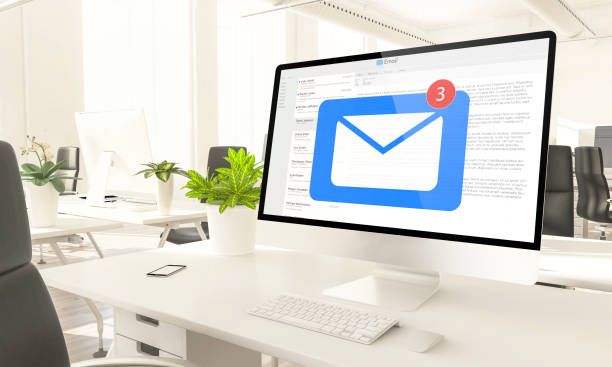In the world of email delivery, managing bounced emails is an essential task for maintaining a healthy and effective communication system. When an email fails to reach its intended recipient, it is considered a bounce. To understand the reasons behind a bounce, it is crucial to delve into the world of bounce email headers. In this comprehensive guide, we will demystify bounce email headers, explain their significance, and provide expert insights on how to interpret and utilize them effectively. Join us as we unravel the complexities and optimize your email delivery process.
Understanding Bounced Emails

A bounced email occurs when a message cannot be successfully delivered to the recipient's inbox. Instead, it "bounces" back to the sender or an email address specified in the bounce email headers. Bounced emails can result from various factors, such as an invalid or non-existent email address, a full mailbox, or spam filters blocking the message.
What are Bounce Email Headers?
Bounce email headers are part of the email message's metadata and contain valuable information about the delivery status and reasons behind the bounce. These headers provide insights into the path the email took, the email servers involved, and any error messages encountered along the way. Analyzing bounce email headers helps diagnose delivery issues, identify patterns, and take appropriate action to improve future email delivery.
Interpreting Bounce Email Headers
- Return-Path: The Return-Path header specifies the email address to which bounced messages are sent. It is different from the "From" address and is used specifically for managing bounces. The Return-Path header helps route bounced emails to the designated address for further analysis and processing.
- SMTP Error Codes: Bounce email headers often include SMTP (Simple Mail Transfer Protocol) error codes, which provide specific information about the reason for the bounce. These codes range from 400 to 600 and can indicate issues such as a non-existent email address (550), a full mailbox (450), or a permanent delivery failure (550). Understanding these error codes helps determine the appropriate actions to resolve delivery issues.
- Diagnostic Codes: In addition to SMTP error codes, bounce email headers may include diagnostic codes that provide further details about the delivery status. These codes offer more specific information about the underlying cause of the bounce, such as spam filtering, email authentication failures, or temporary delivery issues.
Managing Bounced Emails
- Soft Bounces vs. Hard Bounces: Bounced emails can be categorized as soft bounces or hard bounces. Soft bounces are temporary delivery failures that may be caused by issues like a full mailbox or a temporarily unavailable email server. In contrast, hard bounces are permanent failures caused by factors like an invalid email address or a non-existent domain. Managing these bounces appropriately is crucial for maintaining a clean and effective email list.
- Bounce Handling Strategies: Implementing effective bounce handling strategies is essential for managing and maintaining a healthy email delivery system. By analyzing bounce email headers, you can identify patterns and take appropriate actions, such as removing invalid email addresses, updating contact information, or reviewing email content to reduce spam filtering risks.
Expert Tips for Bounce Email Management

- Regularly Monitor Bounce Rates: Keeping a close eye on your bounce rates allows you to identify any sudden spikes or recurring issues. Monitoring bounce rates helps you proactively address delivery issues and maintain a good sender reputation.
- Maintain a Clean Email List: Regularly clean your email list by removing invalid or inactive email addresses. This practice helps reduce bounce rates, improve deliverability, and optimize your email marketing efforts.
- Review and Optimize Email Content: Occasionally, email content can trigger spam filters, resulting in higher bounce rates. Reviewing and optimizing your email content can help reduce the chances of your emails being flagged as spam and improve overall deliverability.
Frequently Asked Questions
Q1: Why do some emails bounce?
A1: Emails can bounce for various reasons, including invalid email addresses, full mailboxes, spam filtering, server issues, or authentication failures.
Q2: What should I do with bounced emails?
A2: Analyze bounce email headers to determine the cause of the bounce. Depending on the type of bounce (soft or hard), take appropriate actions such as updating contact information, removing invalid addresses, or adjusting your email content.
Q3: How can bounce email headers help improve email deliverability?
A3: Bounce email headers provide valuable insights into the reasons for email delivery failures. By analyzing and understanding these headers, you can take proactive measures to optimize your email delivery process, reduce bounce rates, and enhance overall deliverability.
Conclusion
Mastering the art of bounce email headers is crucial for effective email delivery management. By understanding the information they provide and interpreting them accurately, you can diagnose delivery issues, take appropriate actions, and optimize your email communication. Whether it's handling soft bounces, resolving hard bounces, or maintaining a clean email list, bounce email headers serve as a valuable tool in your email marketing arsenal. Stay proactive, stay informed, and ensure that your emails reach the intended recipients every time.

